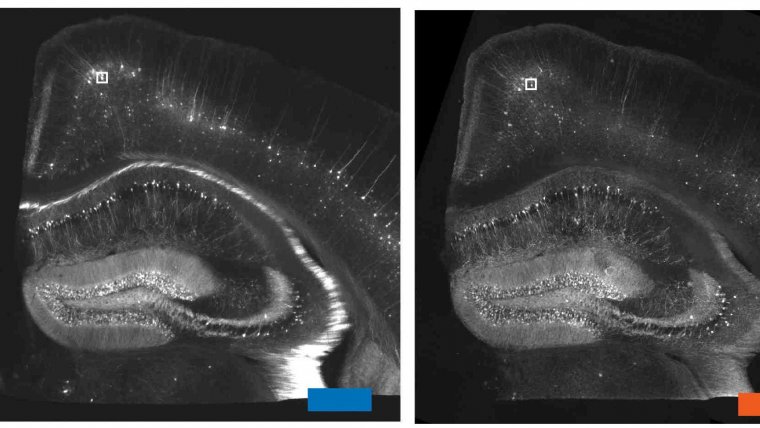| Health / Health News |
Bigger is better for brain tissue understanding
NSF | JANUARY 17, 2015
While most efforts to understand the brain focus on new technologies to magnify small anatomical features, engineers at the MIT-based Center for Brains, Minds and Machines have found a way to make brains physically bigger.

Expansion microscopy enables researchers to resolve details down to about 70 nanometers. ![]()
The engineers who developed the technique, Fei Chen, Paul Tillberg and Edward Boyden at MIT, assert it offers the ability to image large, intact, 3-D brain structures with nanoscale precision for the first time.
The technique, which the researchers call expansion microscopy, uses an expandable polymer and water to swell brain tissue to about four and a half times its usual size, so that nanoscale structures once blurry appear sharp with an ordinary confocal microscope.
Expansion microscopy enables researchers to resolve details down to about 70 nanometers, while 300 nanometers was the previous limit with a conventional microscope.
The new method is another advance in brain imaging that brings researchers closer to illuminating the entire brain and nervous system, one of today's greatest engineering challenges. The process may be useful beyond the brain to other parts of the body. Many types of biological processes involve nanoscale interactions across large systems, such as cancer metastasis and immunological responses.
YOU MAY ALSO LIKE



